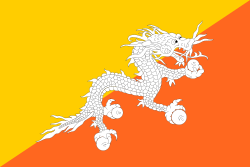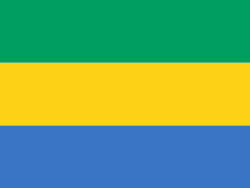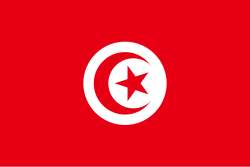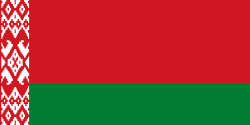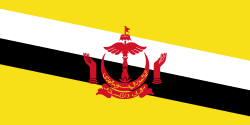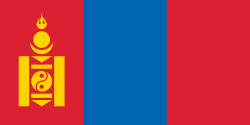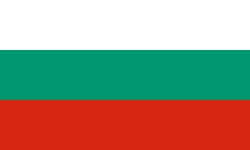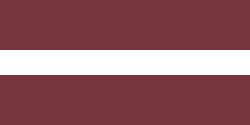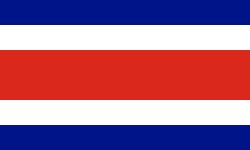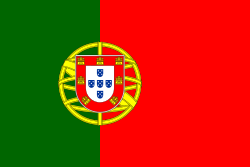Seznam států podle stability
Seznam států podle stability každoročně publikuje časopis Foreign Policy. Ten vychází ze dvanácti základních indikátorů:
Společenské faktory
- Demografický tlak (DP)
- Masový přesun uprchlíků nebo vnitřně vysídlených osob způsobující komplexní humanitární krizi (REF)
- Nenávist mezi skupinami obyvatel (Častý výskyt skupiny rozhořčených lidí hledajících mstu nebo paranoidní nálady ve společnosti) (GG)
- Lidé, kteří jsou trvale na útěku (HF)
Ekonomické faktory
- Nerovnoměrný ekonomický vývoj různých skupin (UED)
- Ostrý a tvrdý ekonomický propad (ECO)
Politické faktory
- Kriminalizace a/nebo delegitimizace státu (SL)
- Postupující úpadek veřejných služeb (PS)
- Potlačení principů právního státu a široké porušování lidských práv (HR)
- Bezpečnostní složky operující jako "stát ve státě" (SEC)
- Nástup elitních frakcí (FE)
- Intervence jiných států nebo externích politických činitelů (EXT)
Seznam států podle stability 2019
Velmi vážná výstraha (Very High Alert)
| Pořadí | Země | Hodnota 2019[1] |
|---|---|---|
| 1 | 113.5 | |
| 2 | 112.3 | |
| 3 | 112.2 | |
| 4 | 111.5 | |
| 5 | 110.2 |
Vážná výstraha (High Alert)
| Pořadí | Země | Hodnota 2019 |
|---|---|---|
| 6 | 108.9 | |
| 7 | 108.5 | |
| 8 | 108.0 | |
| 9 | 105.0 |
Výstraha (Alert)
| Pořadí | Země | Hodnota 2019 |
|---|---|---|
| 10 | 99.5 | |
| 11 | 99.4 | |
| 12 | 99.3 | |
| 13 | 99.1 | |
| 14 | 98.5 | |
| 15 | 98.2 | |
| 16 | 97.0 | |
| 17 | 96.4 | |
| 18 | 96.2 | |
| 19 | 95.5 | |
| 20 | 95.3 | |
| 21 | 94.1 | |
| 22 | 94.3 | |
| 23 | 94.2 | |
| 23 | 94.2 | |
| 25 | 93.5 | |
| 26 | 92.7 | |
| 27 | 92.5 | |
| 28 | 92.2 | |
| 29 | 92.1 | |
| 30 | 90.2 | |
| 31 | 90.1 |
Vysoké varování (High Warning)
| Pořadí | Země | Hodnota 2019 |
|---|---|---|
| 32 | 89.3 | |
| 33 | 88.7 | |
| 34 | 88.4 | |
| 35 | 87.8 | |
| 36 | 87.3 | |
| 37 | 87.5 | |
| 38 | 87.4 | |
| 39 | 86.8 | |
| 40 | 85.7 | |
| 41 | 85.5 | |
| 42 | 85.3 | |
| 43 | 85.1 | |
| 44 | 85.0 | |
| 45 | 84.7 | |
| 46 | 84.0 | |
| 47 | 83.9 | |
| 47 | 83.9 | |
| 49 | 83.3 | |
| 50 | 83.1 | |
| 50 | 83.1 | |
| 52 | 83.0 | |
| 53 | 82.6 | |
| 54 | 82.5 | |
| 55 | 81.9 | |
| 56 | 81.7 | |
| 57 | 81.4 | |
| 58 | 80.9 | |
| 59 | 80.3 | |
| 60 | 80.1 |
Zvýšené varování (Elevated Warning)
| Pořadí | Země | Hodnota 2019 |
|---|---|---|
| 61 | 79.7 | |
| 62 | 78.7 | |
| 63 | 78.1 | |
| 64 | 77.8 | |
| 65 | 77.7 | |
| 66 | 77.2 | |
| 67 | (vážený průměr) | 76.5 |
| 68 | 76.2 | |
| 69 | 75.9 | |
| 70 | 75.7 | |
| 70 | 75.7 | |
| 72 | 75.4 | |
| 73 | 74.7 | |
| 74 | 74.4 | |
| 75 | 73.6 | |
| 76 | 73.2 | |
| 77 | 73.1 | |
| 78 | 73.0 | |
| 78 | 73.0 | |
| 80 | 72.9 | |
| 81 | 72.0 | |
| 81 | 72.0 | |
| 83 | 71.8 | |
| 84 | 71.7 | |
| 85 | 71.4 | |
| 86 | 71.3 | |
| 87 | 71.2 | |
| 88 | 71.1 | |
| 88 | 71.1 | |
| 88 | 71.1 | |
| 91 | 71.0 | |
| 92 | 70.5 | |
| 93 | 70.4 | |
| 93 | 70.4 | |
| 95 | 70.1 |
Varování (Warning)
| Pořadí | Země | Hodnota 2019 |
|---|---|---|
| 96 | 69.8 | |
| 96 | 69.8 | |
| 98 | 69.7 | |
| 99 | 68.2 | |
| 99 | 68.2 | |
| 99 | 68.2 | |
| 102 | 68.0 | |
| 103 | 67.1 | |
| 104 | 67.0 | |
| 105 | 66.7 | |
| 106 | 66.6 | |
| 107 | 66.4 | |
| 108 | 66.2 | |
| 109 | 66.1 | |
| 110 | 65.9 | |
| 111 | 64.6 | |
| 112 | 64.2 | |
| 113 | 63.8 | |
| 114 | 62.5 | |
| 115 | 61.9 | |
| 116 | 61.6 | |
| 117 | 61.2 | |
| 118 | 60.8 | |
| 119 | 60.5 |
Stabilní (Stable)
| Pořadí | Země | Hodnota 2019 |
|---|---|---|
| 120 | 59.5 | |
| 121 | 58.9 | |
| 122 | 57.8 | |
| 123 | 57.6 | |
| 124 | 57.5 | |
| 125 | 55.3 | |
| 126 | 55.2 | |
| 127 | 54.4 | |
| 128 | 54.1 | |
| 129 | 53.9 | |
| 130 | 53.2 | |
| 131 | 53.0 | |
| 132 | 50.6 |
Stabilnější (More Stable)
| Pořadí | Země | Hodnota 2019 |
|---|---|---|
| 133 | 50.0 | |
| 134 | 49.6 | |
| 135 | 48.8 | |
| 136 | 48.0 | |
| 137 | 47.8 | |
| 138 | 47.5 | |
| 139 | 47.0 | |
| 140 | 46.0 | |
| 141 | 45.4 | |
| 142 | 43.9 | |
| 143 | 43.8 | |
| 144 | 42.8 | |
| 145 | 42.0 | |
| 146 | 40.8 | |
| 147 | 40.7 | |
| 148 | 40.5 | |
| 149 | 40.1 |
Velmi stabilní (Very Stable)
| Pořadí | Země | Hodnota 2019 |
|---|---|---|
| 150 | 38.9 | |
| 150 | 38.9 | |
| 152 | 38.1 | |
| 153 | 38.0 | |
| 154 | 37.6 | |
| 155 | 36.7 | |
| 156 | 34.5 | |
| 157 | 34.3 | |
| 158 | 34.0 | |
| 159 | 33.7 | |
| 160 | 32.0 |
Udržitelný (Sustainable)
| Pořadí | Země | Hodnota 2019 |
|---|---|---|
| 161 | 28.6 | |
| 162 | 28.1 | |
| 163 | 28.0 | |
| 164 | 25.3 | |
| 165 | 25.0 | |
| 166 | 24.8 | |
| 167 | 24.7 | |
| 168 | 20.6 | |
| 169 | 20.4 | |
| 170 | 20.3 | |
| 171 | 20.1 |
Velmi udržitelný (Very Sustainable)
| Pořadí | Země | Hodnota 2019 |
|---|---|---|
| 172 | 20.0 | |
| 173 | 19.8 | |
| 174 | 19.7 | |
| 175 | 19.5 | |
| 176 | 18.7 | |
| 177 | 18.0 | |
| 178 | 16.9 |
Reference
V tomto článku byl použit překlad textu z článku List of countries by Fragile States Index na anglické Wikipedii.
- ↑ Fragile States Index 2018: Issues of Fragility Touch the World’s Richest and Most Developed Countries in 2018 [online]. The Fund for Peace, 19 April 2018 [cit. 2019-06-09]. Dostupné online. (anglicky)
Externí odkazy
Média použitá na této stránce
Při zobrazení tohoto souboru lze snadno přidat orámování
Při zobrazení tohoto souboru lze snadno přidat orámování
The proportions of this flag are 3:2; however, there is no official definition for the correct proportions and also 5:3 is widely used.
The national and official state flag of Haiti; arms obtained from File:Coat of arms of Haiti.svg. The civil flag can be found at here.
Vlajka Etiopie
Flag of the Ivory Coast, written by Jon Harald Søby, modified by Zscout370. The colors match to what is reported at http://fotw.vexillum.com/flags/ci.html.
Flag of Mauritania, adopted in 2017. The National Assembly added red stripes to the top and bottom edges to represent “the blood shed by the martyrs of independence”.
Vlajka Angoly
Flag of Rwanda. The flag ratio is 2:3 with the stripes being 2:1:1. Colors are the following officially: Pantone 299 C 2X (blue), RAL 6029 (green), RAL 1023 (yellow) and RAL 1003 (golden yellow). (As of 03/08/2010, the only color used is the Pantone 299 C, which is from here. The rest of the colors are RAL shades from here.)
Flag of Burkina Faso
Flag of Iran. The tricolor flag was introduced in 1906, but after the Islamic Revolution of 1979 the Arabic words 'Allahu akbar' ('God is great'), written in the Kufic script of the Qur'an and repeated 22 times, were added to the red and green strips where they border the white central strip and in the middle is the emblem of Iran (which is a stylized Persian alphabet of the Arabic word Allah ("God")).
The official ISIRI standard (translation at FotW) gives two slightly different methods of construction for the flag: a compass-and-straightedge construction used for File:Flag of Iran (official).svg, and a "simplified" construction sheet with rational numbers used for this file.
Flag of Laos
Flag of Senegal
Zástupný symbol vlajky. Vizte též Category:Flag placeholders a Coats of arms of None.svg.
The national flag of Kingdom of Thailand; there are total of 3 colours:
- Red represents the blood spilt to protect Thailand’s independence and often more simply described as representing the nation.
- White represents the religion of Buddhism, the predominant religion of the nation
- Blue represents the monarchy of the nation, which is recognised as the centre of Thai hearts.
Used color: National flag | South African Government and Pantone Color Picker
| zelená | rendered as RGB 0 119 73 | Pantone 3415 C |
| žlutá | rendered as RGB 255 184 28 | Pantone 1235 C |
| červená | rendered as RGB 224 60 49 | Pantone 179 C |
| modrá | rendered as RGB 0 20 137 | Pantone Reflex Blue C |
| bílá | rendered as RGB 255 255 255 | |
| černá | rendered as RGB 0 0 0 |
bendera Indonesia
Flag of Maldives. The colours used are Pantone 186 C for red and Pantone 348 C for green.
Flag of Namibia
The flag of the Dominican Republic has a centered white cross that extends to the edges. This emblem is similar to the flag design and shows a bible, a cross of gold and 6 Dominican flags. There are branches of olive and palm around the shield and above on the ribbon is the motto "Dios,Patria!, Libertad" ("God, Country, Freedom") and to amiable freedom. The blue is said to stand for liberty, red for the fire and blood of the independence struggle and the white cross symbolized that God has not forgotten his people. "Republica Dominicana". The Dominican flag was designed by Juan Pablo Duarte, father of the national Independence of Dominican Republic. The first dominican flag was sewn by a young lady named Concepción Bona, who lived across the street of El Baluarte, monument where the patriots gathered to fight for the independence, the night of February 27th, 1844. Concepción Bona was helped by her first cousin María de Jesús Pina.
The flag of the Dominican Republic has a centered white cross that extends to the edges. This emblem is similar to the flag design and shows a bible, a cross of gold and 6 Dominican flags. There are branches of olive and palm around the shield and above on the ribbon is the motto "Dios,Patria!, Libertad" ("God, Country, Freedom") and to amiable freedom. The blue is said to stand for liberty, red for the fire and blood of the independence struggle and the white cross symbolized that God has not forgotten his people. "Republica Dominicana". The Dominican flag was designed by Juan Pablo Duarte, father of the national Independence of Dominican Republic. The first dominican flag was sewn by a young lady named Concepción Bona, who lived across the street of El Baluarte, monument where the patriots gathered to fight for the independence, the night of February 27th, 1844. Concepción Bona was helped by her first cousin María de Jesús Pina.
Flag of Jamaica. “The sunshine, the land is green, and the people are strong and bold” is the symbolism of the colours of the flag. GOLD represents the natural wealth and beauty of sunlight; GREEN represents hope and agricultural resources; BLACK represents the strength and creativity of the people. The original symbolism, however, was "Hardships there are, but the land is green, and the sun shineth", where BLACK represented the hardships being faced.
Při zobrazení tohoto souboru lze snadno přidat orámování
Při zobrazení tohoto souboru lze snadno přidat orámování
Vlajka České republiky. Podoba státní vlajky České republiky je definována zákonem České národní rady č. 3/1993 Sb., o státních symbolech České republiky, přijatým 17. prosince 1992 a který nabyl účinnosti 1. ledna 1993, kdy rozdělením České a Slovenské Federativní republiky vznikla samostatná Česká republika. Vlajka je popsána v § 4 takto: „Státní vlajka České republiky se skládá z horního pruhu bílého a dolního pruhu červeného, mezi něž je vsunut žerďový modrý klín do poloviny délky vlajky. Poměr šířky k její délce je 2 : 3.“
This is the national flag of Belgium, according to the Official Guide to Belgian Protocol. It has a 13:15 aspect ratio, though it is rarely seen in this ratio.
Its colours are defined as Pantone black, Pantone yellow 115, and Pantone red 032; also given as CMYK 0,0,0,100; 0,8.5,79,0; and 0,94,87,0.Flag of Portugal, created by Columbano Bordalo Pinheiro (1857–1929), officially adopted by Portuguese government in June 30th 1911 (in use since about November 1910). Color shades matching the RGB values officially reccomended here. (PMS values should be used for direct ink or textile; CMYK for 4-color offset printing on paper; this is an image for screen display, RGB should be used.)
Zelený pruh má znázorňovat většinové katolické obyvatelsto Irska, oranžový pruh reprezentuje protestantskou menšinu a bílý pruh uprostřed znázorňuje mír a harmonii mezi nimi.
Flag of Canada introduced in 1965, using Pantone colors. This design replaced the Canadian Red Ensign design.
The Flag of Iceland.
- Horizontal aspect ratio: 7:1:2:1:14;
- Vertical aspect ratio: 7:1:2:1:7.
Flag of Australia, when congruence with this colour chart is required (i.e. when a "less bright" version is needed).
See Flag of Australia.svg for main file information.Finská vlajka
Flag of São Tomé and Príncipe
















































































